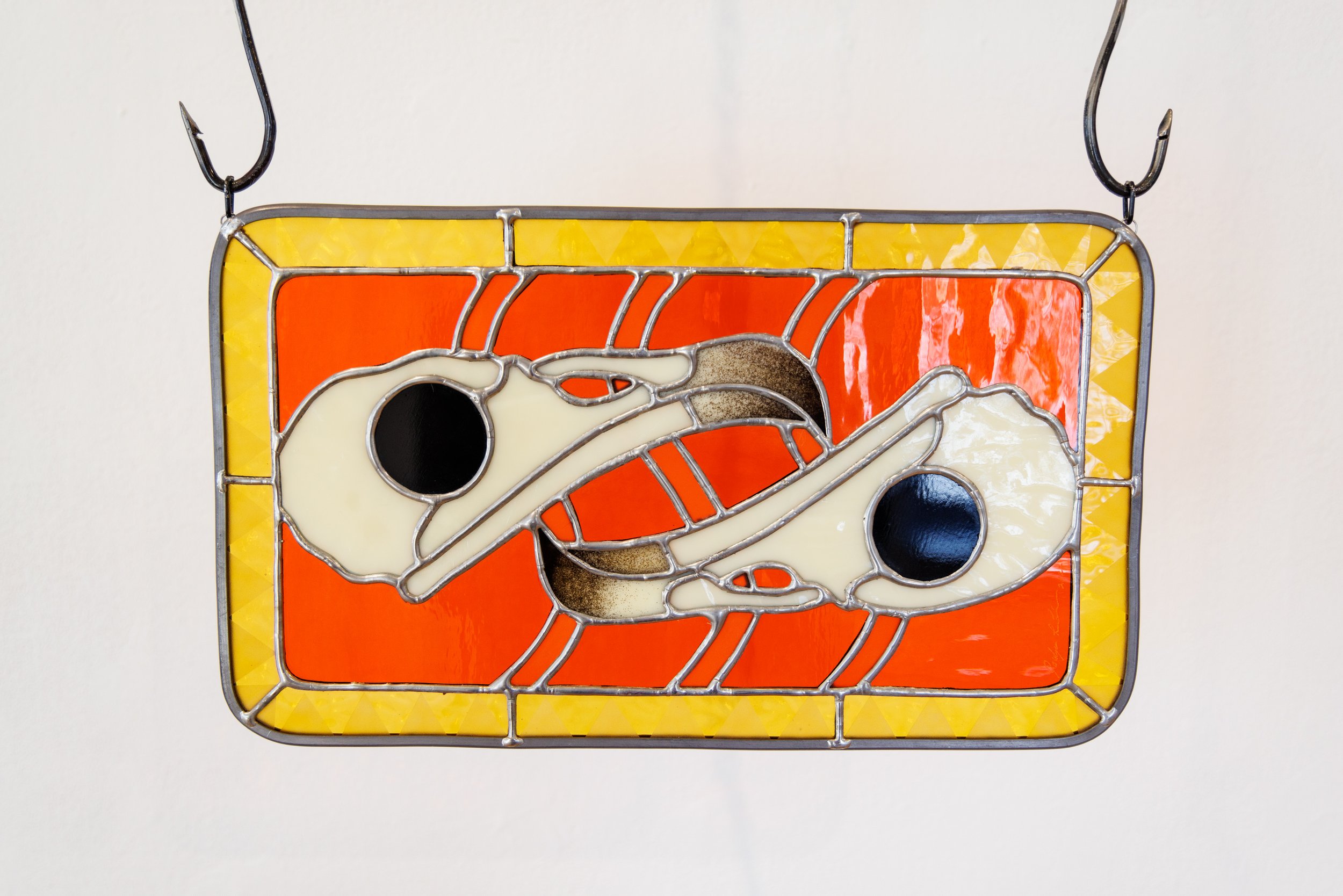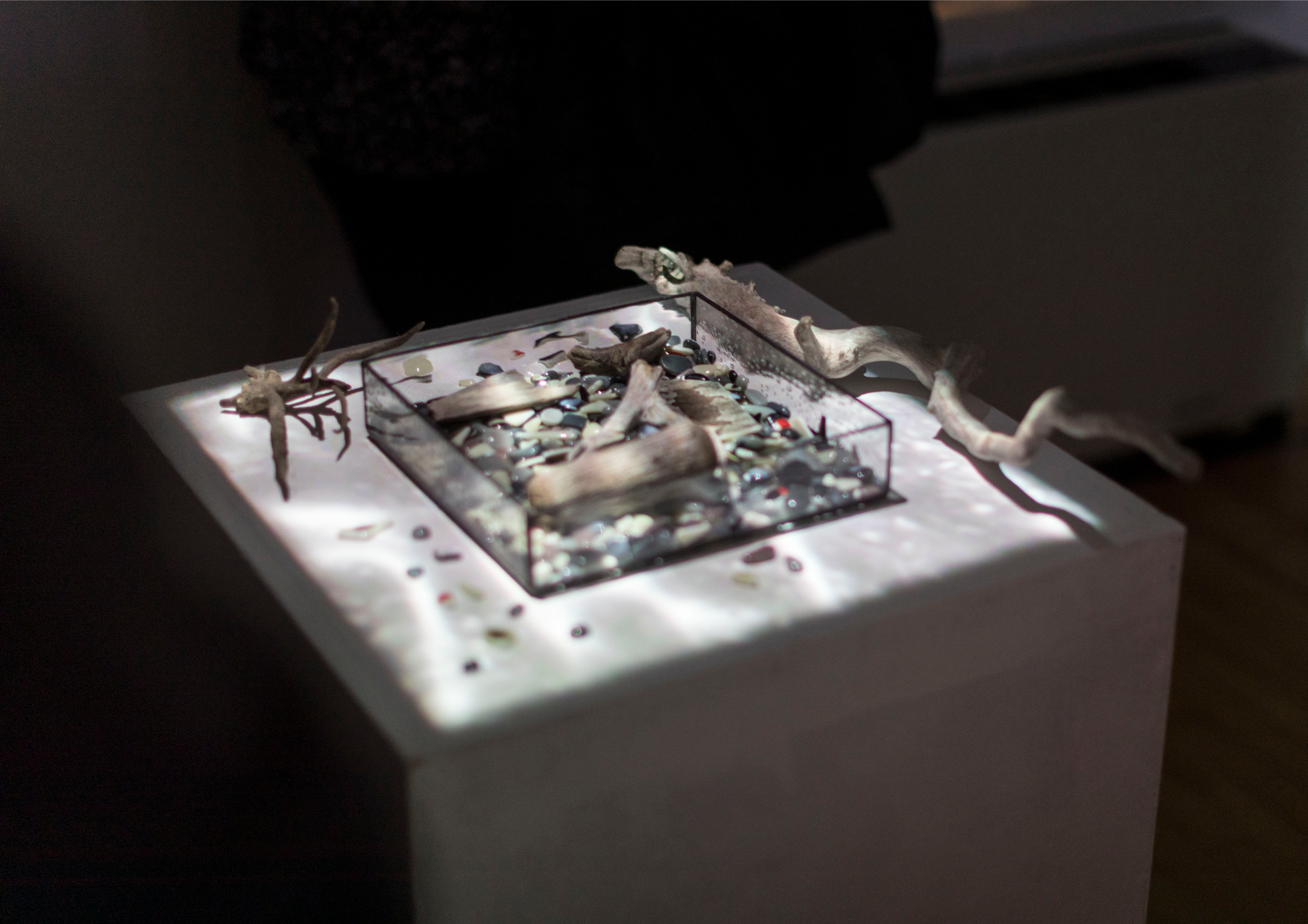BLACKWATER LAKE
An imaginary place hidden deep in the shadows—a strange place inhabited by bizarre creatures who blur the line between existence and nonexistence. A place overlooked, where darkness lives, a place that is the opposite of clear.
Solo Exhibition | Jocelyne Le Léannec | La Maison des Artistes | Winnipeg | Jan 12 - Mar 4 | 2023
EXHIBITION DESCRIPTION
Death is peculiar. Some spend a lifetime trying to avoid, delay or defy it, and others seem to ignore its looming presence altogether. Historically, humanity has been perplexed by the theology of dying in an attempt to answer the question: What happens next? There is a distinct divide when considering the Afterlife. Hope is famous in ideologies like reincarnation and Heaven, where Fear dominates Hell and the horrors of purgatory. They say that we cannot know light without experiencing darkness. Is it possible to find a balance between the two?
In 2016/17, Le Léannec lost her mother and grandmother, and while attempting to find a way to survive her new reality, she felt the need to build something out of the loss.
Blackwater Lake is an imaginary place inspired by a hiking trail called 'The Caves' in Clearwater Lake Provincial Park (Manitoba). As a child, Le Léannec would visit Clearwater Lake during the summer with her brother, father, and late mother to visit family and go fishing. In response to her loss, this body of work addresses the dichotomy of life vs death or light vs dark while exploring the interaction between a craft medium and a digital medium. Le Léannec accentuates these opposing concepts through bright and sombre complementary colour schemes, irregular shapes, texture, symmetry, and reflection. The glass artwork represents an imaginary world hidden deep in the shadows—a strange place inhabited by bizarre creatures who blur the line between existence and nonexistence. A place overlooked, where darkness lives, a place that is the opposite of clear.
GLASS ARTWORK
PROCESS
Each glass artwork is a thoughtfully designed and handcrafted, one-of-a-kind piece that incorporates multiple labour-intensive techniques. Here is a description of the techniques used to produce this body of work:
Copper foiling is a labour-intensive technique that involves wrapping the edge of a piece of glass with a continuous strip of copper foil, then crimping and smoothing. Solder won't stick to bare glass, so copper foil is used to create a surface for the solder to adhere to.
Glass paint is a vitreous enamel which can be applied to glass and fired in a kiln to make it permanent.
Sandblasting is like spray painting, but instead of paint, an abrasive material is blown with compressed air to etch the surface of the glass, making it look frosted. To create a stencil, custom designs are printed and cut into a vinyl "resist" material which is applied to the glass like a sticker. Select areas are then removed to expose the glass to be etched.
Fusing is where you join two or more pieces of glass by heat in a kiln. There are different glass fusing techniques like "tack fusing," where glass pieces are heated until they are just hot enough to stick together, and "full fuse," where the glass is heated until it becomes molten. The fusing process for the piece called ‘Sinking’ consists of 5 steps of fusing.
Flash glass is glass in which a thin layer of colour is applied over another to create one sheet of glass with two different layers of colour. It's traditionally made by glassblowing, but you can make your own by fusing a thin layer of glass powder on top of another glass sheet to create a one-of-a-kind custom-coloured sheet of glass. When sandblasting flashed glass, you can cut through the thin-coloured top layer to expose the base colour in contrast. This technique was used to achieve the ghostly effect of the bones on the body of the 3D dog sculpture called ‘Max’.



























